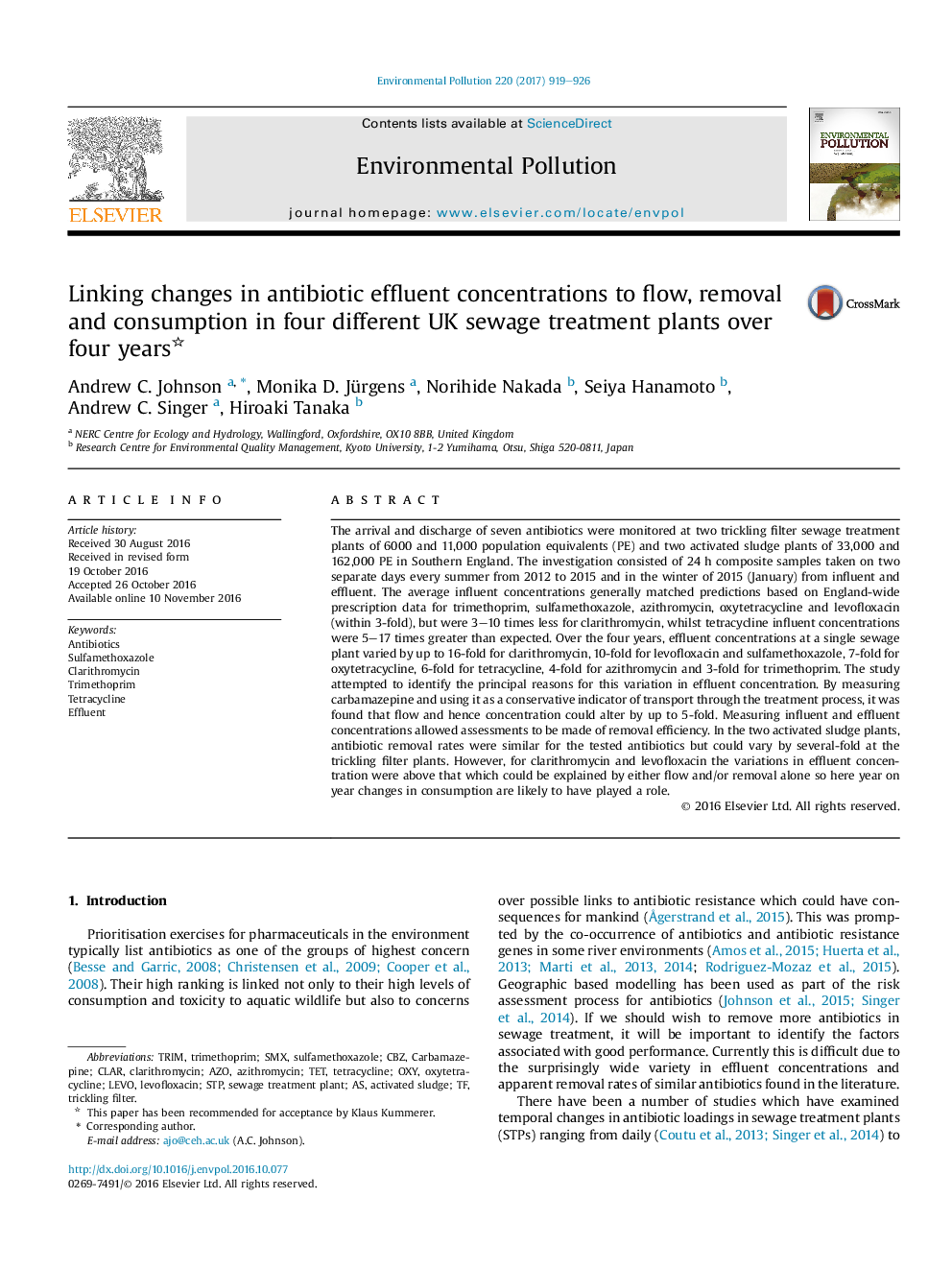| کد مقاله | کد نشریه | سال انتشار | مقاله انگلیسی | نسخه تمام متن |
|---|---|---|---|---|
| 5749520 | 1619153 | 2017 | 8 صفحه PDF | دانلود رایگان |
- Concentrations of 7 antibiotics were measured in 4 sewage treatment plants (STPs).
- Prescription data was used to predict concentrations in influent and effluent.
- Measured concentrations and removal rates in STPs were very variable.
- Average measured values were in line with predictions for 5 of 7 antibiotics.
- Changes in flow, removal rates and consumption influenced effluent levels.
The arrival and discharge of seven antibiotics were monitored at two trickling filter sewage treatment plants of 6000 and 11,000 population equivalents (PE) and two activated sludge plants of 33,000 and 162,000Â PE in Southern England. The investigation consisted of 24Â h composite samples taken on two separate days every summer from 2012 to 2015 and in the winter of 2015 (January) from influent and effluent. The average influent concentrations generally matched predictions based on England-wide prescription data for trimethoprim, sulfamethoxazole, azithromycin, oxytetracycline and levofloxacin (within 3-fold), but were 3-10 times less for clarithromycin, whilst tetracycline influent concentrations were 5-17 times greater than expected. Over the four years, effluent concentrations at a single sewage plant varied by up to 16-fold for clarithromycin, 10-fold for levofloxacin and sulfamethoxazole, 7-fold for oxytetracycline, 6-fold for tetracycline, 4-fold for azithromycin and 3-fold for trimethoprim. The study attempted to identify the principal reasons for this variation in effluent concentration. By measuring carbamazepine and using it as a conservative indicator of transport through the treatment process, it was found that flow and hence concentration could alter by up to 5-fold. Measuring influent and effluent concentrations allowed assessments to be made of removal efficiency. In the two activated sludge plants, antibiotic removal rates were similar for the tested antibiotics but could vary by several-fold at the trickling filter plants. However, for clarithromycin and levofloxacin the variations in effluent concentration were above that which could be explained by either flow and/or removal alone so here year on year changes in consumption are likely to have played a role.
514
Journal: Environmental Pollution - Volume 220, Part B, January 2017, Pages 919-926
